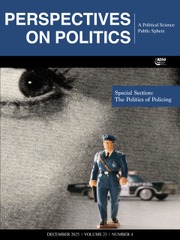My understanding of the relationship between white middle-class youth and American drug control policy changed significantly about midway through the research phase of The Suburban Crisis, when I started digging into the arrest data from key states such as California and the FBI’s annual national crime reports. My initial research findings had focused on how political and media institutions from the 1950s through the 1980s consistently depicted white youth as innocent victims of illegal drug markets and so-called “pushers,” which justified harsh punishment and especially lengthy prison sentences for their Black and Mexican American counterparts. I appreciate that Anne Foster’s generous review highlights the book’s documentation of the “consistency of the racialized suburban politics fueling U.S. drug policy.”
The arrest data does not alter this interpretation but does reveal a more complicated story about the American war on drugs—one that has been hidden in plain sight in law enforcement records and still turned out to be difficult to untangle. From the 1960s until the mid-1980s, white teenagers and young adults accounted for a substantial majority of drug arrests nationwide, mostly for marijuana offenses but also for the illicit use of pharmaceuticals. In 1973, the high point for this phenomenon, white Americans accounted for 81% of drug arrests and 89% of juvenile apprehensions, roughly equivalent to their population share. In short, the familiar graphs demonstrating extreme racial disproportionality in mass incarceration have worked to obscure the extensive operations of drug control policy and discretionary law enforcement in white middle-class suburbia. It was mostly true, as Foster notes, that “young white people did not go to jail”—at least not usually, or not for that long. But millions were arrested, a not insignificant subset were in fact incarcerated, and the discretionary criminal-legal system “diverted” many others into treatment programs, probationary supervision, and other forms of compulsory rehab while rarely leaving a criminal record.
Drug criminalization was (and is) a policy designed in large part for the social control of all youth, even if the consequences unfold very differently based on race, class, and geography. Until the law enforcement shift to crack cocaine markets in the mid-1980s, the highest domestic priority of the American war on drugs—in terms of symbolic politics, government funding, and also arrests—was the futile campaign to deter white teenagers and young adults from smoking marijuana and consuming other criminalized substances. It is important here to recognize that this was only part of what Foster labels the “long war on drugs,” including the imperial origins and American-led international control system that has combined violent interdiction programs with favorable market access for the pharmaceutical industry. The white suburban front of this global drug war is key to understanding how U.S. drug control policy has long operated through a racialized politics of bipartisan consensus, merging punitive law enforcement and coercive public health through a philosophy that “protects” some and “punishes” others. Criminalization expands the power and reach of the carceral state into everyday life (both in the U.S. and around the world), while regulating access to the allegedly benevolent alternative of rehabilitation through the discretionary arrest-and-divert processes that the book’s case studies seek to excavate.

